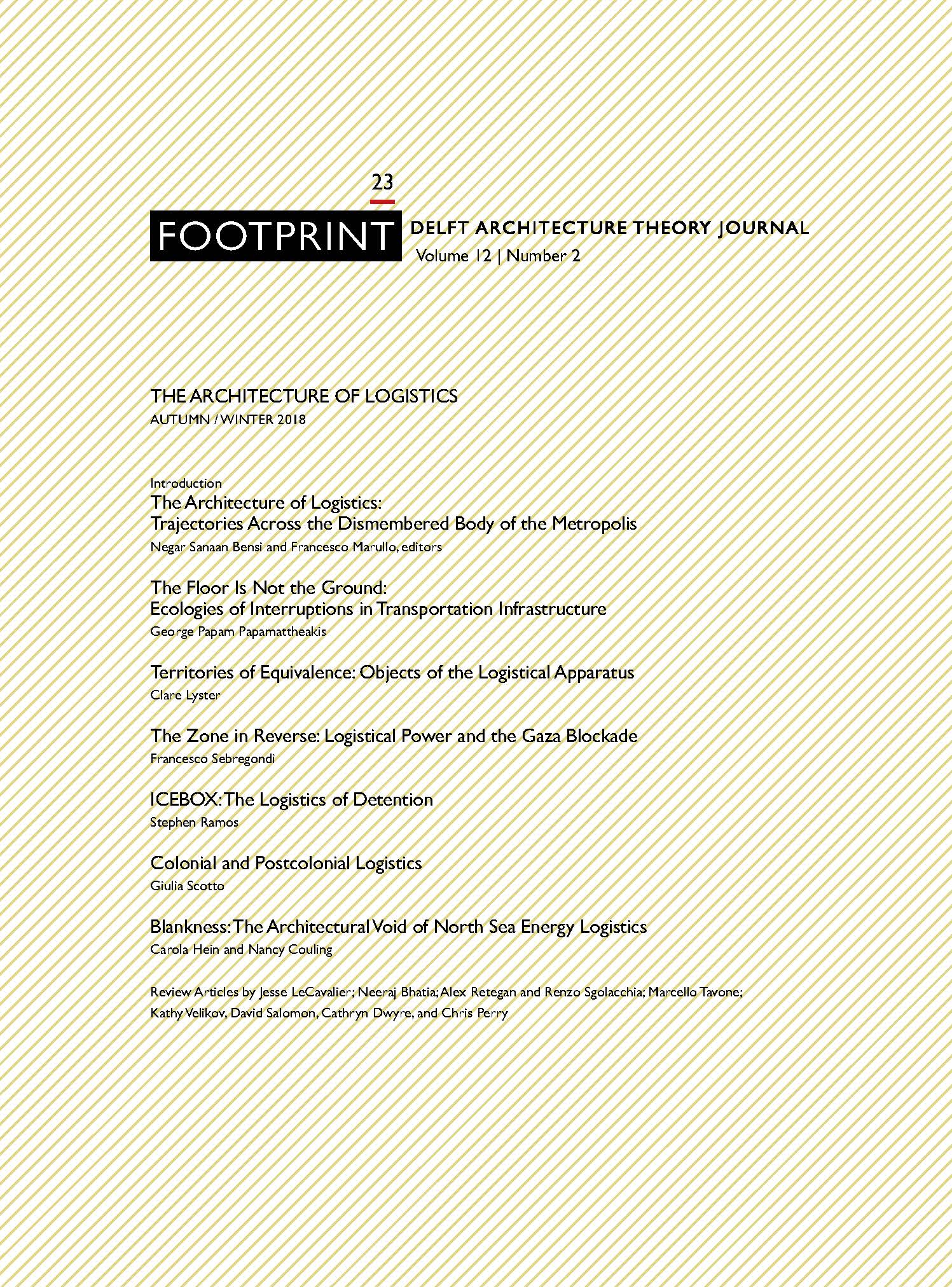The Architecture of Logistics
Trajectories Across the Dismembered Body of the Metropolis
DOI:
https://doi.org/10.7480/footprint.12.2.2784Abstract
The ambition of Footprint 23 is to provide a critical survey of the architecture of logistics, unfolding the multivalences of its apparatus, dissecting its buildings and spaces, its technologies and labour relations, its historical evolutions as well as its future projections. Gathering academic papers and visual essays from researchers and emerging scholars in the field, the issue follows three main directions of inquiry.
The first trajectory attempts to define what logistics is and how it operates, focusing on the inherent ambivalence of its apparatus, able to cope with different scales and various temporal dimensions – from barcodes and gadgets to global routes and territorial infrastructures – constituting both a physical and abstract framework supporting, measuring and quantifying movements and actions, thoughts and desires. The second trajectory investigates the way logistics penetrates our existences, not simply by affecting how we live and work but the way in which it provides the very possibility of life as such, or, in other words, how logistics is inherently political. The third trajectory tackles the past, present and future of logistics, considered as the most crucial apparatus determining the human impact on the earth, controlling the distribution and organisation of organisms and ecosystems, triggering new and more violent forms of colonisation and exploitation.
This issue of Footprint does not seek definitive statements or hypothetic solutions for the monstrous nature of logistics. On the opposite, it aims at unfolding its inner contradictions to propose new possibilities of exploration for an architecture and its project.
References
Cacciari, Massimo. ‘Nomads in Prison.’ Casabella 705 (2002): 106-108.
Easterling, Keller. Extrastatecraft: the power of infrastructure space.London; New York: Verso, 2014.
Downloads
Published
Issue
Section
License
- Authors retain copyright and grant the journal right of first publication with the work simultaneously licensed under a Creative Commons Attribution License that allows others to share the work with an acknowledgement of the work's authorship and initial publication in this journal.
- Authors are able to enter into separate, additional contractual arrangements for the non-exclusive distribution of the journal's published version of the work (e.g., post it to an institutional repository or publish it in a book), with an acknowledgement of its initial publication in this journal.





